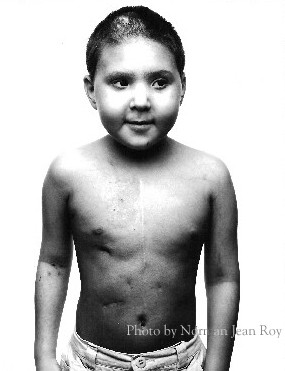
U stem cell research raises new questions
Journal says one image apparently used in patent for three discoveries
BY JEREMY OLSON Pioneer PressTwinCities.com-Pioneer Press
The accuracy of pioneering adult stem cell research at the University of Minnesota is under scrutiny again, as a scientific journal is questioning whether U researchers used a single image of a protein to represent three different scientific discoveries.
The university is investigating, said Tim Mulcahy, the U's vice president for research. However, he said nothing so far has erased the U researchers' original findings that a certain kind of adult stem cell can produce multiple types of cells, proteins and tissues in the body and holds extraordinary potential for future treatments.
"There's no reason to think any differently about the work up until this point in time," he said, though the scientific community will make the ultimate determination.
This is the U's second inquiry in the past year regarding potential flaws in the stem cell research.
The latest concerns focus on a 2001 article in the medical journal Blood and a patent application, approved in 2006, related to the stem cell discoveries. Images in both documents are offered as proof that U researchers used the stem cells, derived from adult bone marrow, to create different types of proteins. But close inspection suggests the images are all of the same protein, not different ones, according to an article New Scientist published Wednesday.
While the magazine seems to hint that someone deliberately misrepresented the data, there is no evidence to support that conclusion, Mulcahy said.
"The university is going to conduct an objective, comprehensive review but we have no evidence at this point of any wrongdoing. We have to let the process go forward and await a conclusion from the investigation."
The stakes for resolving these errors are high for the U, which built its reputation as a powerhouse of stem cell research upon Dr. Catherine Verfaillie's initial discoveries in 2002. Until then, it appeared only stem cells from human embryos were capable of producing all of the different cells and proteins in the body. Verfaillie's research suggested these special stem cells, or multipotent adult progenitor cells (MAPCs), from adult bone marrow could be reprogrammed to produce multiple cell types as well.
The discovery had political ramifications, giving hope to people who opposed embryonic stem cell use on the grounds they were derived from the destruction of human embryos. They often cite Verfaillie's research as part of their proof that embryonic research is unnecessary.
The U has already acknowledged a similar error in which stem cell data for a study published in Nature in 2002 was also published in Experimental Hematology, even though the latter article dealt with an entirely different experiment.
In February 2006, New Scientist brought initial concerns about that duplicate data in the two journals to Verfaillie, who then informed U leaders. In August, an expert committee validated the concerns but concluded they were honest mistakes. However, the reviewers found separate problems in the process the researchers used to identify the MAPC cells, calling the process "significantly flawed."
Subsequent reviews by two stem cell experts have determined that these flaws had no impact on the Experimental Hematology study but may have weakened conclusions published in Nature. Verfaillie has written letters to the two journals about the problems with the research, and at least one plans to publish her explanation.
Beyond the errors, Verfaillie's research has generated controversy because other scientists have had difficulty repeating her results, even when they traveled to the U to copy her team's methods. That difficulty is what drew the curiosity of New Scientist reporters in the first place.
Verfaillie is now at the Catholic University of Leuven in Belgium but remains on the U faculty and active in its stem cell research. She recently authored a stem cell paper along with an influential skeptic, Dr. Irving Weissman of Stanford University, showing that these stem cells could create all types of blood cells. However, the research didn't affirm the U's earlier claim that the stem cells could create other cells and tissues outside of the blood system.
The U is continuing plans to use MAPC cells in clinical trials, Mulcahy said, because those plans are based on progress with MAPC cells at numerous institutions. Initial trials will likely test the cells in patients with Fanconi anemia, a genetic disorder that can cause leukemia and is often fatal.
Jeremy Olson can be reached at jolson@pioneerpress.com or 651-228-5583.


No comments:
Post a Comment